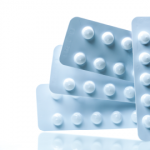Data from 71 people with gout and 126 without gout revealed that those with gout had 3.1-fold higher odds (95% CI, 1.5 to 6.1) of having MSU-coded vascular lesions, which attenuated after age/sex-adjustment using the default settings. However, with the optimized settings, the OR was 3.9 (95% CI, 1.8 to 9.4), and although this attenuated, it remained significantly different after age/sex-adjustment.
Given the higher risk of cardiovascular disease for people with gout, the association of gout with cardiovascular risk factors and the inflammatory nature of MSU crystals, these findings raise a number of questions. The contribution of MSU crystals in coronary vasculature to cardiovascular events and whether urate-lowering therapy alters the observed MSU deposition and any subsequent effects on cardiovascular events remain to be determined.
6. Abstract 2560
Continuous Reduction in Ultrasound Detected Crystal Depositions over 5 Years Follow-up. Hammer et al.9
Tophi are collections of MSU crystals together with chronic inflammatory tissue. Tophi can impair joint movement, cause pain, ulceration and result in joint damage. Tophus regression occurs around the concentration of 6 mg/dL (0.36 mmol/L) with more rapid reduction in tophus size occurring with lower serum urate concentrations. The study by Hammer et al examined the change in tophi using ultrasound over two to five years on urate-lowering therapy in people enrolled in the NOR-gout study.
During the first year of the NOR-gout study, urate-lowering therapy was adjusted to achieve target serum urate of <6 mg/dL (0.36 mmol/L) or 5 mg/dL (0.30 mmol/L) in those with tophi. After the first year, participants were followed by their primary care physician to maintain target urate with additional study visits at year 2 and 5. Ultrasound was undertaken at baseline, months 12, 24, and 60, with semi-quantitative scoring of MSU crystal deposits. Two hundred nine participants were included, and mean serum urate remained below target of <6 mg/dL at months 3, 6, 12, 24 and 60. The ultrasound revealed a corresponding reduction in the tophi and aggregates as well as the sum ultrasound score, which continued out to five years.
These data will be useful in talking to people with gout and, especially, those with tophi about the time it takes for tophi to dissolve and the need for adherence with long-term urate-lowering therapy to maintain serum urate below target to achieve crystal dissolution. Although benefits are seen in the first year, persistence with therapy will see even more reduction in tophus, even that which may not be visible to the naked eye.

